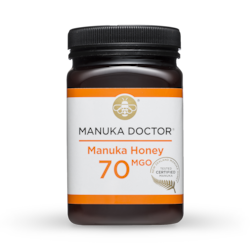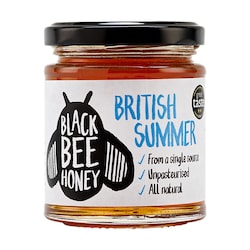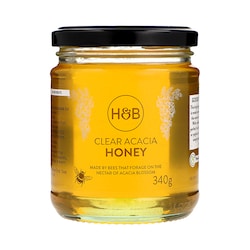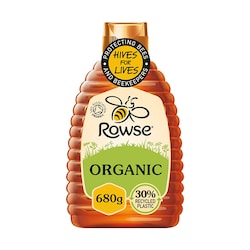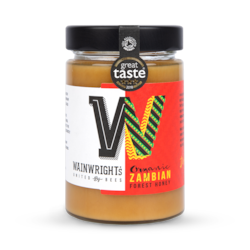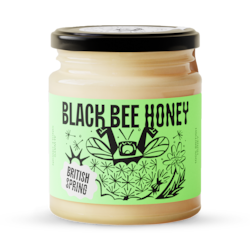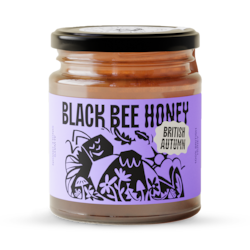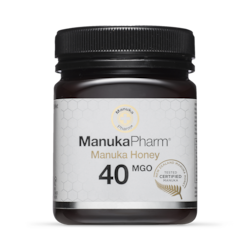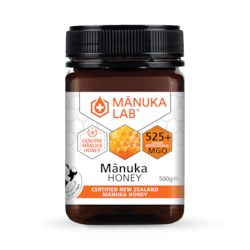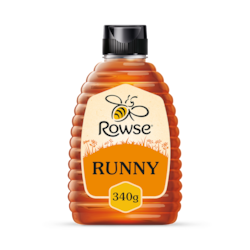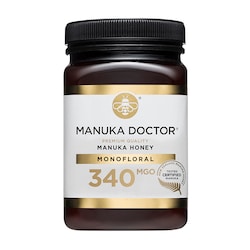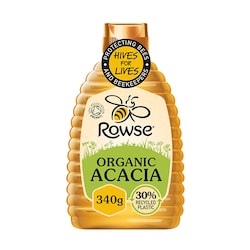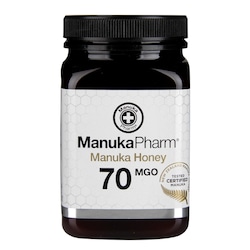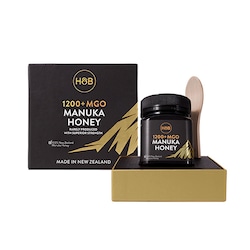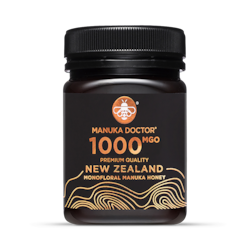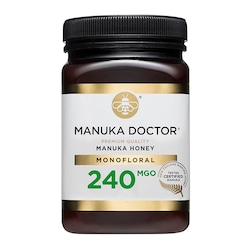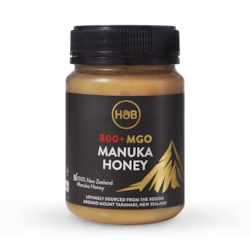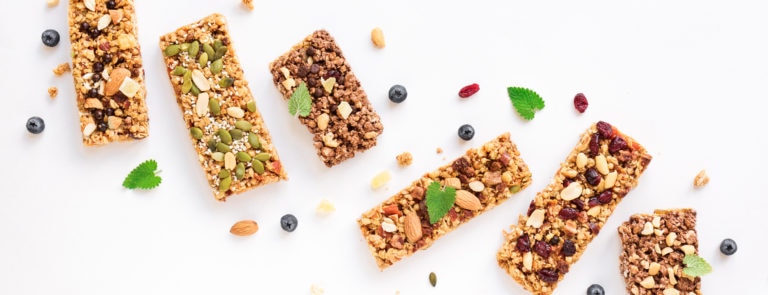20% off £30
7 benefits of honey
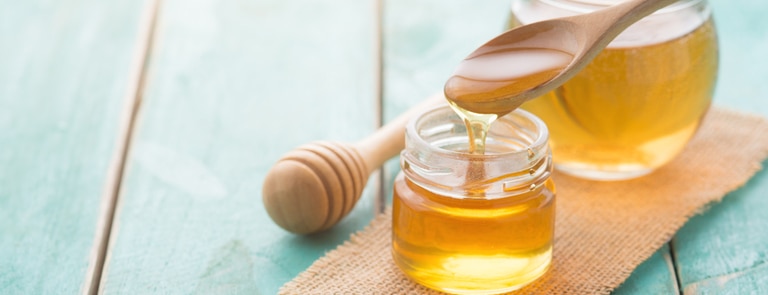
Honey is as old as time. It first appeared in written history in 2100 BC and was the first widespread sweetener known to man.
Today, we know it comes from bees, we know it’s a natural sugar alternative, it supports the stomach and it can adapt itself to many cooking methods.
But what do we know about the benefits of honey? Is honey healthy?
In this article, we’ll find out exactly what the buzz is all about – whilst trying to keep the bee puns to a minimum.
What is honey?
Honey is the thick, golden liquid that bees produce by using the nectar of flowering plants.
The taste, smell and texture of honey can differ depending on the type of flowers that bees visit to extract pollen. This results in different varieties, such as:
Popular honey varieties in the UK
- Acacia
- Clover
- Honeydew or forest
- Manuka
- Orange blossom
- Wildflower
How is honey made?
The National Honey Board states that honey starts as flower nectar is collected by bees, which is then broken down into simple sugars that are stored inside the honeycomb.1
The design and shape of the honeycomb, along with the constant fanning of the bees’ wings cause evaporation, which creates sweet liquid honey.
The colour and flavour of honey vary based on the nectar collected by bees.
For example, honey which is extracted from orange blossom nectar is likely to be light in colour, where honey from wildflowers may have a dark amber colour.2
7 benefits of honey
It may well be known as liquid gold, but honey has more to it than just being a sweet treat that you stick on your toast as a snack.
In fact, it may have health benefits and unique healing properties.
-
A great alternative to sugar
Honey has a lower GI value than sugar, which means it does not raise blood sugar levels as quickly.3
Honey contains around 40% fructose and 30% glucose, with the other 30% being made up of water, pollen and trace minerals, which includes potassium, calcium and magnesium.4
By comparison, refined sugar contains 50% fructose and 50% glucose.
This does not necessarily mean that honey is low in sugar, it is more that honey has a better GI than refined sugar.
It’s worth keeping in mind that honey counts as a ‘free’ sugar and each teaspoon contains around 5.6g of sugar, so it's worth taking on NHS advice for adults and have no more than 30g of free sugars per day.
With that said, honey is a great substitute for sugar. While it may be higher in calories, it also has a sweeter taste which would normally mean you use less.
-
May help with hayfever and other allergies
It may well be an old wives’ tale, but eating local honey has long been thought to help with hayfever and other allergies.
In all honesty, there isn’t a lot of research to support this.
However, one 2011 study looked at a birth pollen allergy in Finland. Patients were given honey with added birth pollen prior to the hayfever season from November to March, and then recorded their symptoms from April and May.
Results found that a 60% lower total symptom score and twice as many days without symptoms when comparing results with people using conventional medicine.
However, it’s fair to say that more evidence is needed on this to provide a clearer conclusion.5
-
May soothe sore throats and coughs
Again, traditionally honey has always been considered a way to soothe a sore throat or contain properties that may help a cough.
One 2016 study found that honey may be better than ‘no treatment’ for symptoms relating to a cough.
Although it was not found to be better than cough mixtures or medicine bought at a pharmacist.6
For the best guidance on this, you should speak to your GP for coughs and respiratory tract infections.
-
Antibacterial properties
Honey is a rich source of flavonoids that are well researched and found to have antibacterial, anti-viral, anti-inflammatory, and anti-allergic properties.7
There have been both lab and clinical trials that have found honey to be effective for a number of antibacterial activities.8
-
Wound healing
There is also the consideration that honey may help encourage the growth of new tissue and minimise the scarring, which is great for non-serious wounds, ulcers and burns.9
-
It may help your skin
Due to these antibacterial and anti-inflammatory properties, honey is effective to help calm and soothe irritated skin.
One study into dermatitis found that 30 patients who had seborrheic dermatitis on the scalp, face and chest were asked to apply diluted honey every other day for three hours.
After four weeks, all 30 patients found there was improvements in their condition.
-
Good for an energy boost
As a carbohydrate made up of fructose and glucose, the sticky stuff makes for a high-powered, energy snack.
Unlike refined sugar, it also contains small amounts of proteins and minerals such as B6, riboflavin and amino acids; compounds that help the body metabolise bad cholesterol and fatty acids.
While whizzing a spoonful into your smoothie won't do any long-term harm, it's important to remember to eat honey in moderation.
Honey nutrition
A 100g serving of honey contains:
| Energy | Fat | Carbs | Fructose | Glucose | Protein | |
|---|---|---|---|---|---|---|
| Amount | 288kcal | 0g | 76.4g | 41.8g | 34.6g | 0.4g |
Is honey vegan?
No, honey is it not vegan. It’s produced by bees and is, therefore, a product of animal origin.
Side effects of honey
While there are no serious side effects related to honey, there is some concern around infant botulism.
This is very rare, however, you should follow NHS guidance and not allow children under one year old to have honey.9
You should also limit your honey intake to avoid tooth decay and other teeth-related problems.
Last updated: 21 September 2021
- https://honey.com/about-honey/how-honey-is-made
- https://honey.com/about-honey/how-honey-is-made
- https://www.bbcgoodfood.com/howto/guide/is-honey-good-for-you
- https://www.nhs.uk/live-well/eat-well/how-does-sugar-in-our-diet-affect-our-health/
- https://www.bbcgoodfood.com/howto/guide/is-honey-good-for-you
- https://www.ncbi.nlm.nih.gov/pmc/articles/PMC4934161/
- https://pubmed.ncbi.nlm.nih.gov/24438231/
- https://pubmed.ncbi.nlm.nih.gov/23569748/
- https://www.nhs.uk/conditions/baby/weaning-and-feeding/foods-to-avoid-giving-babies-and-young-children/#honey



